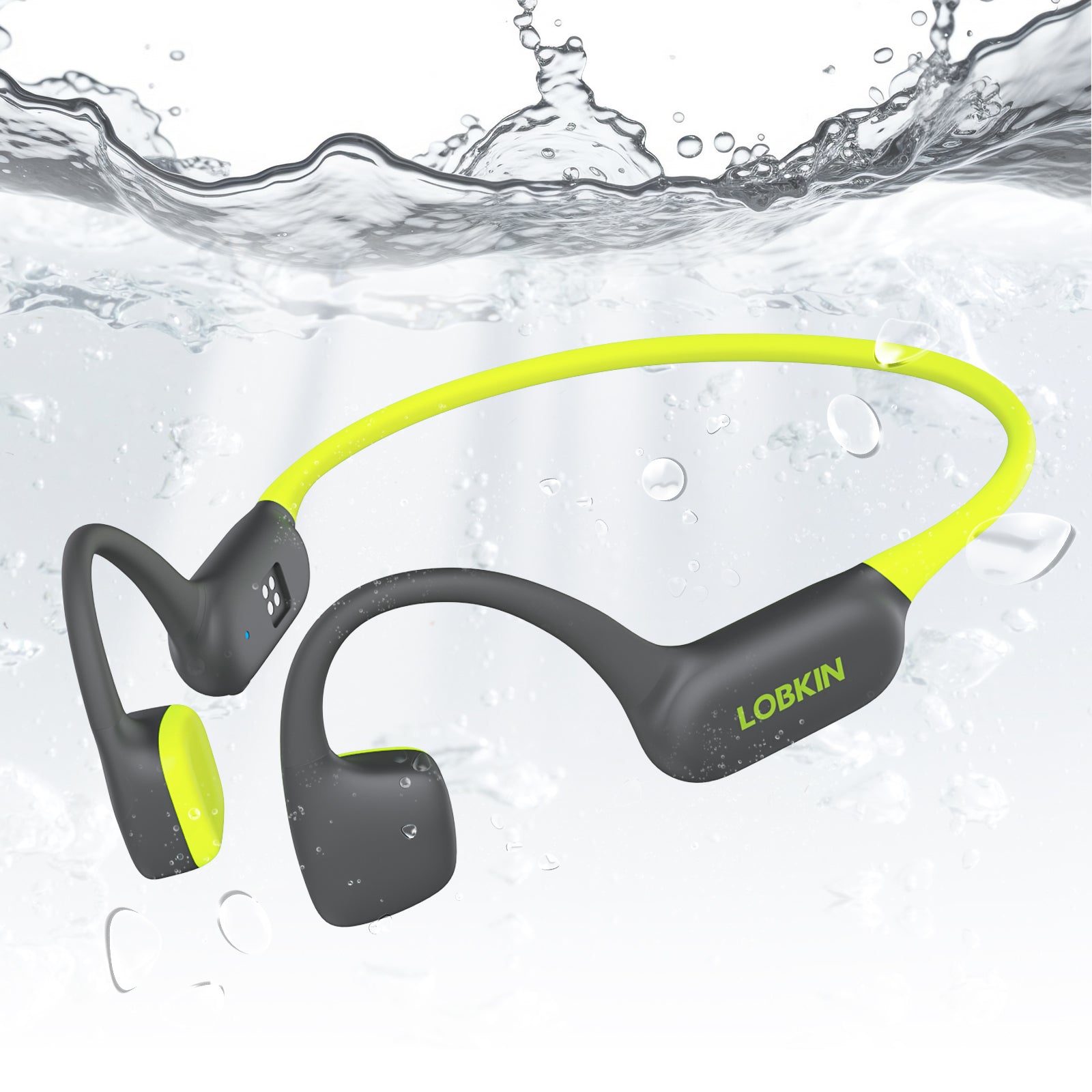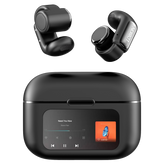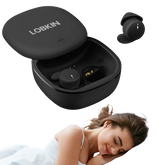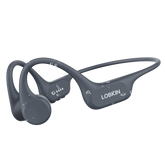Why 85dB Volume Limiting is Crucial for Children's Hearing
Introduction
As parents, we want to give our children the best experiences, including enjoying music, audiobooks, and educational content through headphones. However, many parents are unaware of a silent threat: noise-induced hearing loss (NIHL) from excessive headphone volume.
The World Health Organization estimates that over 1 billion young people worldwide are at risk of hearing loss due to unsafe listening practices. The good news? This is entirely preventable with proper volume limiting, specifically the 85dB standard.
In this comprehensive guide, we will explain why 85dB volume limiting is crucial for protecting your child's hearing and how to ensure they are listening safely.
Understanding Hearing Damage
How Hearing Works
The human ear is a delicate and complex organ. Sound waves travel through the ear canal, vibrate the eardrum, and move tiny hair cells in the inner ear (cochlea). These hair cells convert vibrations into electrical signals that the brain interprets as sound.
How Loud Sounds Cause Damage
When exposed to loud sounds, these delicate hair cells can be damaged or destroyed. Unlike other cells in the body, hair cells do not regenerate. Once damaged, hearing loss is permanent and irreversible.
Two types of noise-induced hearing loss:
- Acute damage: Single exposure to extremely loud sound (explosion, concert)
- Cumulative damage: Repeated exposure to moderately loud sounds over time
Headphone use typically causes cumulative damage, making it especially dangerous because it happens gradually and often goes unnoticed until significant hearing loss has occurred.
Why Children Are More Vulnerable
Children's ears are more susceptible to hearing damage than adults for several reasons:
- Developing auditory system: Still maturing and more sensitive
- Smaller ear canals: Amplify sound pressure by 5-10 dB
- Longer exposure time: More years of potential damage accumulation
- Less awareness: Cannot recognize warning signs of hearing damage
- Inability to self-regulate: Young children do not understand safe volume levels
What is 85dB and Why This Number?
Decibel Scale Explained
Decibels (dB) measure sound intensity on a logarithmic scale. This means every 10 dB increase represents a sound that is 10 times more intense.
Common sound levels:
- 30 dB: Whisper
- 60 dB: Normal conversation
- 70 dB: Vacuum cleaner
- 85 dB: Heavy traffic, lawnmower
- 100 dB: Motorcycle, power tools
- 110 dB: Rock concert, car horn
- 120 dB: Ambulance siren
- 140 dB: Jet engine, gunshot
The 85dB Safety Threshold
According to the World Health Organization (WHO), National Institute for Occupational Safety and Health (NIOSH), and pediatric audiologists worldwide, 85 dB is the maximum safe listening level for extended periods.
Why 85dB specifically?
- Loud enough to enjoy content clearly
- Quiet enough to prevent hearing damage
- Allows for 8 hours of safe listening per day
- Provides safety margin for children's sensitive ears
- Internationally recognized standard
Safe Listening Duration by Volume
The louder the sound, the less time you can safely listen:
| Volume Level | Safe Listening Time | Risk Level |
|---|---|---|
| 85 dB | 8 hours | Safe |
| 88 dB | 4 hours | Caution |
| 91 dB | 2 hours | Caution |
| 94 dB | 1 hour | Risky |
| 97 dB | 30 minutes | Risky |
| 100 dB | 15 minutes | Dangerous |
| 103 dB+ | 7 minutes or less | Very Dangerous |
Important: Most smartphones and tablets can reach 100-110 dB at maximum volume - dangerously loud for children!
The Hidden Danger of Regular Headphones
Why Standard Headphones Are Risky
Most consumer headphones can reach volumes of 100-120 dB, far exceeding safe levels for children. Without volume limiting, children can easily:
- Turn volume too high without realizing
- Gradually increase volume as they get used to loud sounds
- Compete with background noise by raising volume
- Accidentally max out volume
Software Volume Limits Are Not Enough
Many parents rely on device volume limits, but these have serious limitations:
- Easy to bypass: Children can disable in settings
- Inconsistent: Different apps may override limits
- Device-specific: Does not work with all devices
- Not foolproof: Can be reset or adjusted
- Varies by content: Some audio files are louder than others
Real-World Statistics
Recent studies show alarming trends:
- 1 in 5 teenagers has some degree of hearing loss
- 30% increase in hearing loss among children in past 20 years
- 50% of young people use headphones at unsafe volumes
- Most hearing damage is preventable with proper volume limiting
How Hardware Volume Limiting Works
Built-In Protection
Hardware-based 85dB volume limiting is built directly into the headphones' circuitry. This means:
- Cannot be bypassed: No settings to change
- Always active: Works with any device or app
- Consistent protection: Same limit regardless of content
- Foolproof: Parents can trust it completely
- No maintenance: Always working, no batteries or updates needed
LOBKIN's 85dB Volume Limiting Technology
All LOBKIN kids headphones feature hardware-based 85dB volume limiting:
- S16 Kids Headphones: 85dB limit, 50-hour battery, LED lights
- S31 Kids Headphones: 85dB limit, 50-hour battery, comfortable design
- S31-ANC Kids Headphones: 85dB limit with active noise cancellation
- S32 Cat Ear Headphones: 85dB limit, Bluetooth 6.0, fun design
- S33 Kids Headphones: 85dB limit, 55-hour battery, safe volume
Key features:
- Hardware-based limiting (cannot be overridden)
- Works with all devices and apps
- Maintains sound quality at safe levels
- Tested and certified for child safety
Signs of Hearing Damage in Children
Warning Signs to Watch For
Early detection is crucial. Watch for these signs:
Behavioral changes:
- Asking "what?" frequently
- Turning up TV or device volume
- Speaking louder than necessary
- Not responding when called
- Difficulty following conversations
- Preferring one ear over the other
Physical symptoms:
- Ringing in ears (tinnitus)
- Ear pain or discomfort
- Feeling of fullness in ears
- Muffled hearing after headphone use
- Sensitivity to certain sounds
Academic issues:
- Difficulty hearing teacher
- Trouble with phonics or reading
- Speech development delays
- Attention problems (may be hearing-related)
When to See an Audiologist
Consult a pediatric audiologist if your child:
- Shows any warning signs above
- Has been exposed to loud sounds regularly
- Complains of ringing or muffled hearing
- Has family history of hearing loss
- Uses headphones more than 2 hours daily
Recommended: Baseline hearing test at age 4, then every 2-3 years.
Teaching Children Safe Listening Habits
The 60/60 Rule
Even with 85dB limiting, teach children the 60/60 rule:
- Listen at no more than 60% of maximum volume
- Take a break every 60 minutes
- Rest ears for 5-10 minutes between sessions
Creating Healthy Habits
For young children (3-7 years):
- Limit headphone use to 1-2 hours per day
- Supervise headphone use
- Use volume-limited headphones only
- Teach them to tell you if ears hurt
- Make ear breaks part of routine
For older children (8-12 years):
- Explain why hearing protection matters
- Teach them to recognize unsafe volumes
- Encourage breaks during long sessions
- Model good listening habits yourself
- Regular hearing check-ups
For teens (13+ years):
- Discuss long-term consequences of hearing loss
- Explain that hearing damage is permanent
- Encourage use of volume-limited headphones
- Warn about concert and event noise
- Promote ear protection at loud venues
Beyond Headphones: Complete Hearing Protection
Other Sources of Hearing Damage
Protect your child's hearing from all loud sounds:
- Concerts and events: Use ear protection
- Fireworks: Keep safe distance, use earplugs
- Power tools: Keep children away or use ear protection
- Loud toys: Check decibel levels before purchasing
- Movie theaters: Consider ear protection for young children
- Sporting events: Protect ears from crowd noise
Creating a Hearing-Safe Environment
- Keep TV and music at moderate volumes
- Use sound-absorbing materials in playrooms
- Teach children to speak at normal volumes
- Avoid shouting or yelling games
- Create quiet zones for rest and study
Choosing the Right Volume-Limited Headphones
What to Look For
Essential features:
- Hardware-based 85dB limiting: Cannot be bypassed
- Comfortable fit: For extended wear
- Durable construction: Withstands kids' use
- Safe materials: BPA-free, hypoallergenic
- Adjustable sizing: Grows with child
- Good sound quality: Clear audio at safe volumes
Red Flags to Avoid
- Software-only volume limiting
- No safety certifications
- Cheap materials or construction
- No volume limit specification
- Adult headphones marketed for kids
- Extremely low prices (quality concerns)
Why Choose LOBKIN Kids Headphones
Safety first:
- Hardware-based 85dB volume limiting
- Cannot be overridden or bypassed
- Works with all devices
- Tested and certified
Quality and comfort:
- Soft, adjustable ear cushions
- Lightweight design
- Durable construction
- 50-55 hour battery life
Kid-friendly features:
- Fun LED lights (toggleable)
- Multiple color options
- Foldable for easy storage
- Built-in microphone for calls
Frequently Asked Questions
Is 85dB loud enough for kids to enjoy content?
Yes! 85dB is roughly the volume of heavy traffic or a busy restaurant - plenty loud to enjoy music, movies, and games clearly. If it seems too quiet, check for background noise or poor fit.
Can my child use regular headphones with device volume limits?
Not recommended. Software limits can be easily bypassed, and different apps may override them. Hardware-based limiting is the only reliable protection.
Will volume-limited headphones work with all devices?
Yes! Hardware volume limiting works with any device - phones, tablets, computers, gaming systems, etc. The limit is in the headphones, not the device.
What if my child complains they are too quiet?
This usually means background noise is too loud, or they have gotten used to unsafe volumes. Reduce background noise, ensure proper fit, and give them time to adjust. Their ears will adapt within a few days.
Are there exceptions when louder volumes are okay?
No. The 85dB limit is based on protecting developing ears. There are no safe exceptions for children's headphone use.
Can hearing damage be reversed?
No. Noise-induced hearing loss is permanent. Hair cells in the inner ear do not regenerate. Prevention is the only solution.
The Long-Term Impact
Consequences of Childhood Hearing Loss
Hearing damage in childhood affects entire life:
- Academic performance: Difficulty learning and comprehension
- Social development: Communication challenges
- Career limitations: Some professions require good hearing
- Quality of life: Reduced enjoyment of music, conversations
- Mental health: Isolation, depression, anxiety
- Tinnitus: Permanent ringing in ears
- Progressive loss: Often worsens over time
The Cost of Hearing Loss
Beyond health impacts, hearing loss is expensive:
- Hearing aids: $1,000-$6,000+ per ear
- Regular audiologist visits
- Speech therapy
- Educational support services
- Replacement and maintenance costs
Prevention is priceless: Investing in volume-limited headphones now can save thousands in future costs and protect your child's quality of life.
Conclusion
Protecting your child's hearing is one of the most important things you can do as a parent. With over 1 billion young people at risk of hearing loss, and hearing damage being permanent and irreversible, prevention is crucial.
Hardware-based 85dB volume limiting is the gold standard for children's headphone safety. It provides reliable, consistent protection that cannot be bypassed, ensuring your child can enjoy audio content safely.
LOBKIN kids headphones combine this essential safety feature with comfort, durability, and fun designs that kids love. By choosing volume-limited headphones and teaching healthy listening habits, you are giving your child the gift of lifelong hearing health.
Do not wait until damage occurs. Protect your child's hearing today with proper volume-limited headphones. Their future self will thank you.







